
Computer mouse for disabled individuals have revolutionized the way people with physical disabilities interact with computers.
Our aim is to provide a comprehensive guide to these assistive technologies, highlighting their functionality, types, and the best products available on the market.
This article is the result of extensive research, including a thorough analysis of top pages on Google's search engine results, product reviews, and expert opinions from our organization.
A computer mouse for disabled individuals is a specialized device designed to provide an alternative to the traditional computer mouse, enabling those who may not have control over their hands to use a computer.
These devices come in various forms and use different technologies, but their primary function remains the same: to translate the user's movements or actions into cursor movements on the screen. Some devices use a webcam to track the user's head movements.
These assistive technologies are part of a broader category aimed at making computers more accessible to people with disabilities, specifically addressing the needs of the user. They can be life-changing tools, providing a level of independence that might not be possible with standard computer peripherals.
Whether it's browsing the web, sending an email, or creating a digital masterpiece, these devices open up a world of possibilities for those who might otherwise struggle with computer usage.
The adaptability of these devices is key. Depending on the type, they can be controlled by various body movements such as head or eye movements, or even by speech.
This flexibility allows for customization based on the user's abilities and preferences, ensuring that everyone, regardless of their physical condition, can have access to the digital world.
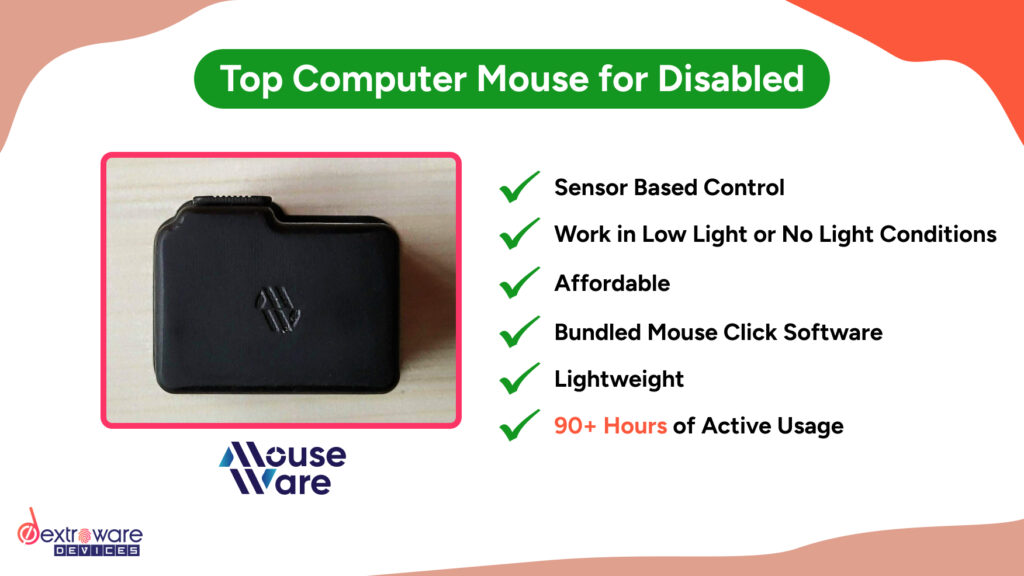
In the realm of computer mice for disabled individuals, Mouseware stands out as the ultimate choice. This innovative product, designed by Dextroware Devices, offers an all-inclusive kit that facilitates hands-free operation of computers and other smart devices.
Mouseware is not just about moving the cursor; it's a comprehensive solution that integrates head movement tracking, voice commands, and customizable switches to provide a seamless user experience.
Computer mice for disabled individuals come in a variety of forms, each designed to cater to different needs and abilities. Here's a breakdown of the main types:
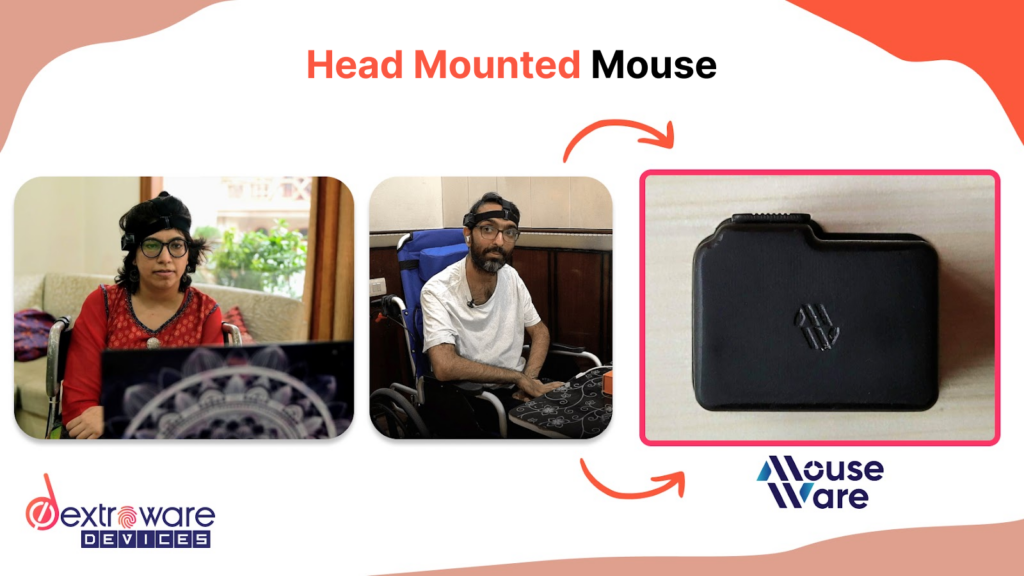
These assistive technologies are worn on the user's body, often on the head, and track slight head movements to control the cursor or mouse click.
Mouseware is an example of a wearable device that utilizes head movement for cursor inputs. This is ideal for users who have good control over their head movements. Check out more about Mouseware and Some of their user stories to learn more.
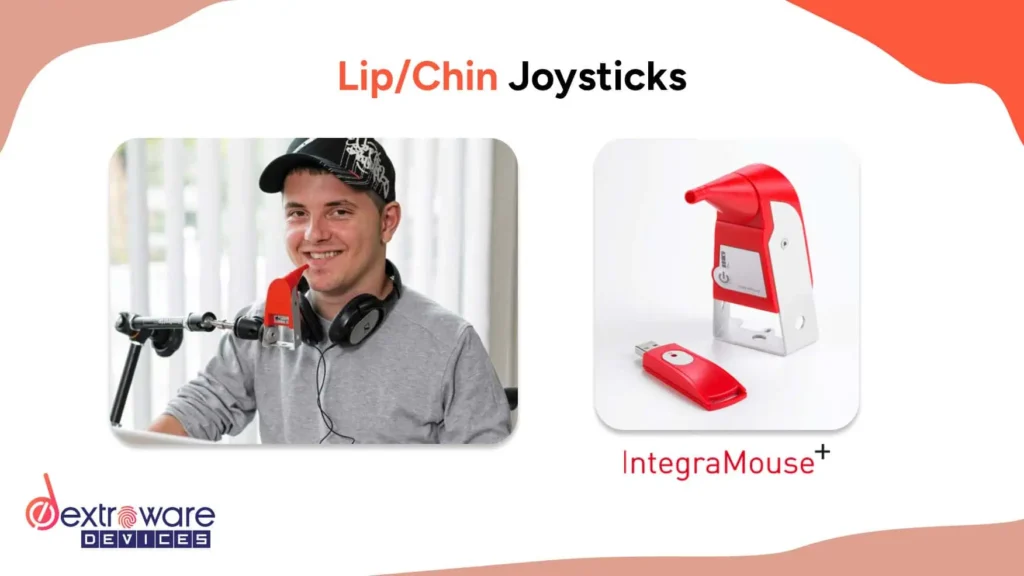
These devices are controlled by the user's lip or chin movements. They are typically mounted on a flexible arm that can be adjusted to the user's comfort.
Products like the IntegraMouse+, fall into this category. These devices are particularly useful for individuals with limited upper body mobility but who can control their facial movements.
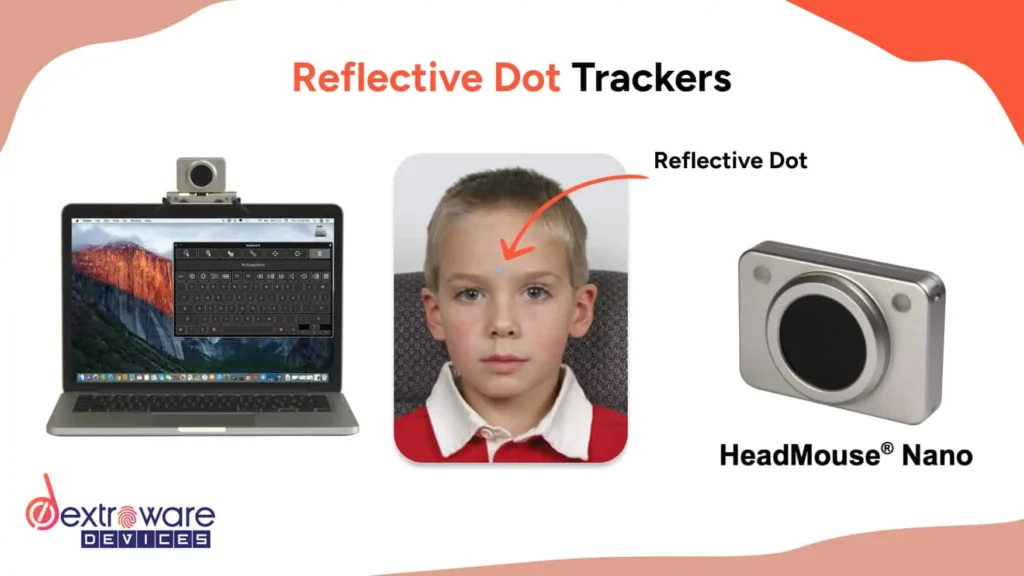
These systems use a camera to track a reflective dot worn by the user, translating its movement into cursor control.
They are compatible with various operating technologies, including Windows, Mac OS X, and Linux, providing a versatile solution for many users.
The TrackerPro 2 and HeadMouse Nano are examples of different options for this type of device. They offer precise control and can be used with any software that accepts mouse input.

These assistive technologies use a camera to track the user's facial movements, translating them into cursor control.
Products like the Sesame Enable, SmyleMouse, ViVo Mouse, Camera Mouse, Enable Viacam, and iTracker fall into this category.
They are particularly useful for individuals who have good control over their facial movements.

These devices use sophisticated technology to track the user's eye movements, translating them into cursor control.
The PCEye Plus, PCEye Mini, Tobii, and IrisBond Duo are examples of eye movement trackers. They offer a high level of precision and are ideal for users who have good control over their eye movements.
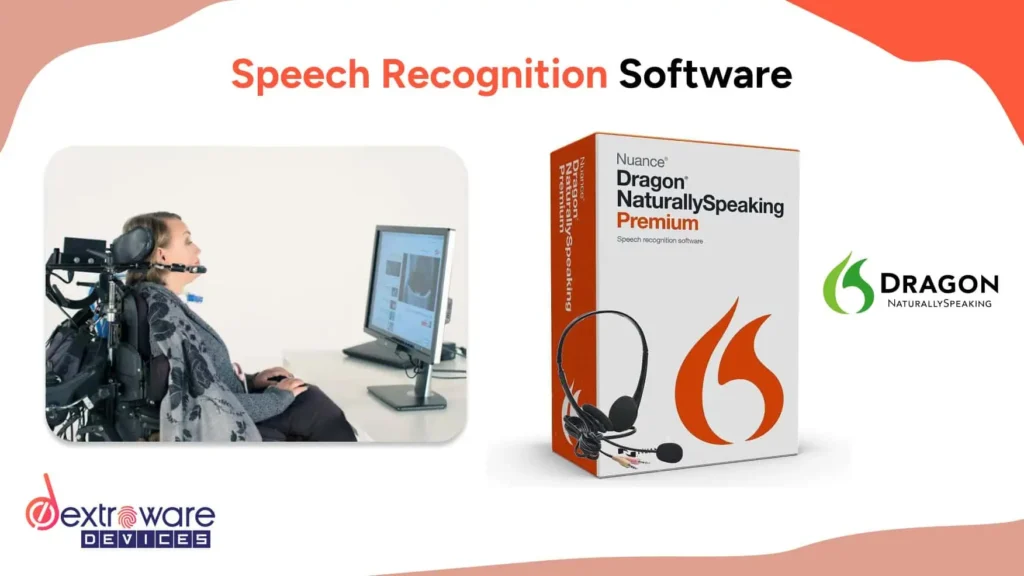
These systems allow the user to control the cursor through voice commands. Dragon Naturally Speaking, Windows Speech Recognition, and Mac OS X Voice Control are examples of speech recognition systems.
They are particularly useful for individuals who have good vocal control but limited mobility.
Each type of computer mouse for disabled individuals has its unique advantages and is designed to cater to different needs and abilities. The key is to find the one that best suits the user's specific situation and comfort level.
After extensive research and comparison, we've selected a top pick from each category of computer mice for disabled individuals.
These selections are based on their features, functionality, compatibility, and user reviews.
Our top pick is the 'Mouseware'. This head wearable mouse stands out for its exceptional functionality, ease of use, and compatibility.
It's designed to provide a seamless and intuitive experience, allowing users to control their computer cursor with simple head movements.
The device is lightweight and comfortable to wear, making it suitable for extended use, whether connected via USB to a laptop or used wirelessly with Bluetooth on Android devices and tablets.
The IntegraMouse+ is a remarkable assistive device renowned for its cutting-edge wireless design and innovative built-in sip-and-puff switches.
Specifically designed to cater to the needs of individuals with limited upper body mobility, this device proves to be a game-changer for those with excellent control over their facial movements.
The HeadMouse Nano, with its wireless design and exceptional precision, is a fantastic choice for users seeking a wearable device.
innovative tool allows for precise cursor control and functions seamlessly with any software that accepts mouse input.
The Smyle Mouse is an ergonomic head mouse software offering hands-free computer control using only a webcam.
This technology allows users to move their mouse pointer by simply moving their head and to click by smiling, eliminating the need for wearables, sip/puff switches, or stickers on the face.
The Tobii Tracker 4C is developed by Tobii Gaming and is designed for mainstream users, making high-quality eye tracking accessible at a lower cost.
It serves as a computer access solution for individuals with disabilities.
Dragon Naturally Speaking offers a remarkable feature that allows full mouse control through intuitive voice commands, making it an excellent choice for individuals who have good vocal control but limited mobility.
Navigating the digital world should be an accessible experience for everyone, regardless of physical abilities.
Computer mice for disabled individuals have opened up a world of possibilities, enabling individuals with various physical disabilities to interact with computers in ways that were once unimaginable. In this guide, we've explored the different types of devices, from lip/chin joysticks and wearable devices to eye movement trackers and speech recognition systems. Our top picks in each category, such as the IntegraMouse+ for lip/chin joysticks and Mouseware for wearable hands-free mouse, are based on their features, functionality, compatibility, and user reviews from around the world.